Komentáře / Otázky (54)
![]() Linda Pryce napsala:
Linda Pryce napsala:
On row 3 of A 2 there is a yarn over before the slip1 K1 psso. If I do this after the yarn over I only have 7 stitches before the K2tog followed by a yarn over. The pattern shows 9 stitches between. What am I doing wrong or is the yarn over part of the s1k1 pssoand the k 2 together?
17.02.2025 - 16:10Odpověď DROPS Design :
Dear Mrs Pryce, you should keep the same number of rows on row 3 as on row 1, as the yarn overs will compensate the decreases worked until you work the double decrease on top of the lace triangle (where you decrease 2 stitches but make no yarn overs). Happy knitting!
20.02.2025 - 12:26
![]() Anne Young napsala:
Anne Young napsala:
Is it possible to purchase a paper pattern of pattern no. ne-179. The early autumn cardigan knitted wit Drops Nepal
22.01.2025 - 15:10
![]() Vlasta Saková napsala:
Vlasta Saková napsala:
Dobrý den, prosím poradíte, jak zmenšit návod DROPS 166-8 na dívčí velikost 152??? moc se mi líbí, jen si nevím rady...díky předem. Vlasta
18.11.2021 - 15:51
![]() Nel napsala:
Nel napsala:
Bij het lijf staat er niets aan gegeven wanneer er met het patroon gestart wordt. Dit is wel bij andere patronen van drops. Nu kan ik mijn werk gaan uit halen. Is niet fijn.
13.04.2021 - 14:03
![]() Madeleine Bergh napsala:
Madeleine Bergh napsala:
Hej, (fråga 1) Om jag har 246m i storlek M när jag påbörjar oket, hur kan det bli 268 efter första flätan i A1, och (fråga2) jag får det till 166m (storlek M, efter att ha minskat 80m) i stället för 146m efter rapporten stickats 1 gång på höjden, är det fel i mönstret? "Efter första flätan i A.1 är det 243-268-293-318-343-368 m på st. Fortsätt med mönstret och minskn i A.2, när A.1/ A.2 har stickats 1 gång på höjden är det 133-146-159-172-185-198 m på st. "
22.10.2020 - 15:29Odpověď DROPS Design :
Hej Madeleine. När vi skriver att det ska vara 268 m efter första flätan menar vi efter första vridningen på flätan, dvs efter varv 3 i diagrammen är stickade. Du stickar A.1 totalt 11 gånger på 1 varv (först 10 gånger tillsammans med A.2 och sedan 1 gång innan de 5 sista rätstickade m). Det ökas 2 m i varje A.2. 246+ (2x11)=268 m. Sedan minskar du 100 m i A.2 och 22 m i A.1. 268-100-22= 146 m. Observera att sista minskningen i A.2 är på 4 maskor, inte 2 som de tidigare. Mvh DROPS Design
23.10.2020 - 09:02
![]() Sarah Paule Dalle napsala:
Sarah Paule Dalle napsala:
In the photo it looks like the cables are knit right up to the two ridges at the neckline, but in following the instructions I end up with several cm of stockinette between the end of the cable pattern and the neckline. Have I misunderstood something?
13.10.2020 - 22:14Odpověď DROPS Design :
Dear Mrs Dalle, if you work the elevation on back piece, there might be some more stocking stitch after pattern and before neck edge. You might like to work these short rows in garter stitch or just leave them (neck on front piece and back piece will be the same). Happy knitting!
14.10.2020 - 07:57
![]() Siobhan Sargent napsala:
Siobhan Sargent napsala:
I have completed the chart and followed the instructions and my stitch count is not correct it's less for the size l, THe neck is very wide unlike the photo do you suggest ripping and redoing the yoke
20.05.2020 - 13:19Odpověď DROPS Design :
Dear Mrs Sargent, do you have the correct number of sts in each diagram as described in previous answer? When 159 sts remain, knit 1 row while dec 47 sts evenly = 112 sts remain, purl 1 row and work now elevation. You are welcome to bring your work to your store to show them what you did till now (or send them a picture), it would be much easier for them to check. Happy knitting!
20.05.2020 - 13:36
![]() Siobhan Sargent napsala:
Siobhan Sargent napsala:
Dear drops, I am knitting this cardigan in the size l, I have worked my way through the chart and have not got the correct amount of stitches after I have done the decreases, can you please Advise? Also in the back it says to do the short rows, is this continues in the pattern or stocking stitch ? Thank you
20.05.2020 - 00:37Odpověď DROPS Design :
Dear Mrs Sargent, in size L you start yoke with 269 sts and work: 5 front band sts, 11 x (A.1, A.2), A.1, 5 front band sts. When diagrams are finished, there are 6 sts in each A1 and 7 sts in each A.2, this means: 5 + 11x (6+7) + 6 + 5 = 159 sts. Short rows for the elevation on back piece are worked in stocking stitch. Happy knitting!
20.05.2020 - 07:17
![]() SPD napsala:
SPD napsala:
There is a mistake in the instructions for the buttonhole: the k2tog should be on the 2nd and 3rd stitches from the edge (not 3rd &4th)
03.05.2020 - 01:07
![]() Cath napsala:
Cath napsala:
Je viens de tricoter ce modèle (en taille S) et je ne comprends pas le nombre de mailles indiqué une fois que les diagrammes A1 et A2 ont été tricotés. Si j'ai 243 m après la première torsade et que je diminue de 2 m à chaque surjet double donc 9 fois dans la largeur (répétition du motif) et 4 fois dans la hauteur, je diminue au total de 72 m. 243 mailles - 72 = 171 mailles (et pas 133)
01.05.2020 - 08:49Odpověď DROPS Design :
Bonjour Cath, vous diminuez non pas 8 mailles mais 10 mailles dans chaque A.2 + 2 mailles dans la dernière torsade de chaque A.1 soit: 10 diminutions x 9 A.2 = 90 diminutions et 2 diminutions x 10 A.1 = 20 diminutions. Vous aviez 243 m - 90 m - 20= 133 m. Bon tricot!
04.05.2020 - 10:05
Early Autumn Cardigan#earlyautumncardigan |
||||||||||||||||||||||||||||
 |
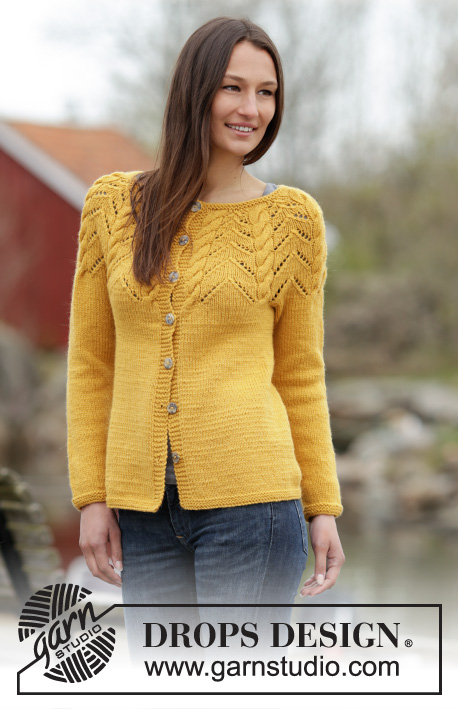 |
|||||||||||||||||||||||||||
DROPS propínací svetr - kabátek do A s kruhovým sedlem, copánky a ažurovým vzorem pletený z příze "Nepal". Velikost: S-XXXL.
DROPS 166-8 |
||||||||||||||||||||||||||||
|
VROUBKOVÝ VZOR: V řadách: pleteme stále hladce, lícové i rubové řady. 1 vroubek = 2 řady hladce. V kruhových řadách: pleteme střídavě 1 kruhovou řadu hladce, 1 obrace. 1 vroubek = 2 kruhové řady. TIP – UJÍMÁNÍ (trup): PŘED značkou (začínáme 4 oka před značkou): 2 oka spleteme hladce, 2 oka upleteme lícovým žerzejem. ZA značkou: 2 oka upleteme lícovým žerzejem, 1 oko sejmeme hladce, 1 upleteme hladce a sejmuté přes ně přetáhneme. VZOR: Viz schémata A.1-A.2; zvolte si schéma pro požadovanou velikost. KNOFLÍKOVÉ DÍRKY: Knoflíkové dírky vyplétáme v léze pravého předního dílu. 1 dírka = 3. a 4. oko od předního okraje légy a 1x nahodíme. Knoflíkové dírky vyplétáme v těchto rozestupech: Velikost S: 11, 17, 23, 30, 37, 44 a 51 cm. Velikost M: 11, 18, 25, 32, 39, 46 a 53 cm. Velikost L: 11, 18, 25, 32, 39, 47 a 55 cm. Velikost XL: 11, 18, 26, 34, 42, 50 a 57 cm. Velikost XXL: 11, 19, 27, 35, 43, 51 a 59 cm. Velikost XXXL: 11, 20, 29, 37, 45, 53 a 61 cm. --------------------------------------------------------- PROPÍNACÍ SVETR TRUP: Pleteme v řadách na kruhové jehlici od okraje jedné légy k okraji druhé. Na kruhovou jehlici č.4 nahodíme přízí Nepal 159-174-193-208-223-242 ok. Označíme si boky – do pleteniny vložíme 2 značky, vždy za 42.-46.-51.-55.-58.-63. oko od každého předního okraje (= mezi značkami leží 75-82-91-98-107-116 ok zadního dílu). Upleteme 3 vroubky vroubkovým vzorem – viz výše. Pak pleteninu převedeme na kruhovou jehlici č.5 a pleteme lícovým žerzejem, jen krajních 5 ok na každé straně pleteme vroubkovým vzorem (= légy). Ve výši 8 cm ujmeme na obou stranách obou značek 1 oko - viz TIP - UJÍMÁNÍ! Toto ujímání opakujeme vždy po 8-9-10-9-10-10 cm výšky ještě 3x (= ujmeme celkem 4x) = 143-158-177-192-207-226 ok. Ve výši 36-38-40-38-40-42 cm uzavřeme na každém boku 8 ok pro průramky (tj. 4 oka na každé straně každé značky) = 59-66-75-82-91-100 ok zadního dílu a 34-38-43-47-50-55 ok každého předního dílu. Díl odložíme a upleteme rukávy. RUKÁV: Pleteme v kruhových řadách na ponožkových jehlicích. Na ponožkové jehlice č.4 nahodíme přízí Nepal 36-38-40-42-44-46 a upleteme 3 vroubky vroubkovým vzorem – viz výše. Pak převedeme pleteninu na ponožkové jehlice č.5. Označíme si začátek kruhové řady (= střed vnitřní strany rukávu). Pokračujeme lícovým žerzejem. SOUČASNĚ ve výši 8 cm přidáme na každé straně značky 1 oko (přidáváme rozpletením 1 oka na dvě). Toto přidávání opakujeme vždy po 3,5-3-3-2,5-2,5-2,5 cm výšky ještě 9-10-10-11-12-12x (= přidáme celkem 10-11-11-12-13-13x) = 56-60-62-66-70-72 ok. Ve výši 44-45-45-42-42-43 cm uzavřeme uprostřed vnitřní strany rukávu 8 ok (tj. 4 oka na každé straně značky) = na jehlici zbývá 48-52-54-58-62-64 ok. Díl odložíme a upleteme stejným způsobem i druhý rukáv. SEDLO: Rukávy a trup převedeme na jednu a tutéž kruhovou jehlici č.5 (rukávy přiložíme k trupu v místech uzavřených pro průramky) = 223-246-269-292-315-338 ok. Pokračujeme lícovou řadou, takto: 5 ok vroubkovým vzorem, *vzor A.1, vzor A.2*, *-* opakujeme 9-10-11-12-13-14x, končíme vzorem A.1 a 5 oky vroubkovým vzorem. Zvolte si schéma pro požadovanou velikost! Po dokončení prvního copánku ve vzoru A.1 máme na jehlici 243-268-293-318-343-368 ok. Pokračujeme v pletení vzoru a ujímáme dle schématu A.2. Po dokončení 1 celé sekvence vzoru A.1/A.2 (na výšku) máme na jehlici 133-146-159-172-185-198 ok. Upleteme 1 řadu a SOUČASNĚ ujmeme rovnoměrně 33-40-47-54-61-68 ok = 100-106-112-118-124-130 ok. Upleteme 1 řadu obrace. Nyní tvarujeme pomocí zkrácených řad zvýšený zadní průkrčník – pleteme lícovým žerzejem a označíme si střed zadního průkrčníku; upleteme 7 ok hladce za značkou uprostřed zadního průkrčníku, práci otočíme, přízi utáhneme a pleteme zpět 14 ok obrace, práci otočíme, přízi utáhneme a upleteme 21 ok hladce, práci otočíme a takto pokračujeme – po každém otočení upleteme o 7 ok více, až do chvíle, kdy upleteme celkem 56-56-56-70-70-70 ok, práci otočíme a upleteme 1 řadu hladce zpět k přednímu okraji. Nyní upleteme 1 rubovou řadu obrace. Pak pleteninu převedeme na kruhovou jehlici č.4 a upleteme 2 vroubky. Poté všechna oka v lícové řadě hladce uzavřeme. DOKONČENÍ: Sešijeme otvory v podpaží. Přišijeme knoflíky. |
||||||||||||||||||||||||||||
Vysvětlivky ke schématu |
||||||||||||||||||||||||||||
|
||||||||||||||||||||||||||||
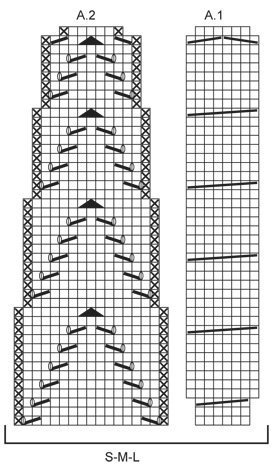
|
||||||||||||||||||||||||||||
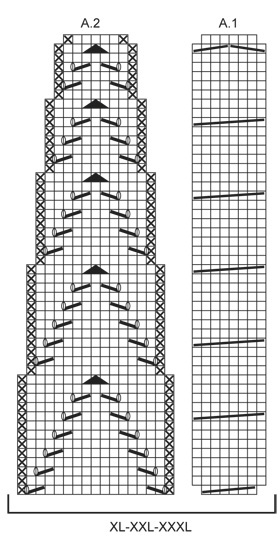
|
||||||||||||||||||||||||||||
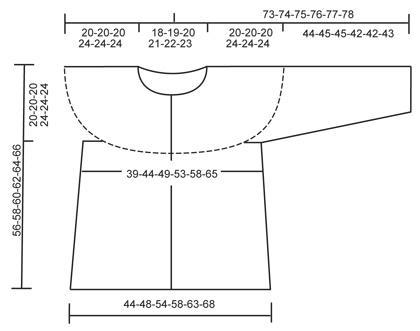
|
||||||||||||||||||||||||||||
Dokončili jste tento model?Pak označte své fotky tagem #dropspattern #earlyautumncardigan nebo je pošlete do galerie #dropsfan. Potřebujete s tímto návodem poradit?Otevřete-li si návod na stránce garnstudio.com, najdete tam 25 výukových video-ukázek, Komentáře/Dotazy a další užitečné informace. © 1982-2025 DROPS Design A/S. Vyhrazujeme si veškerá práva. Tento dokument, včetně všech jeho dílčích částí, podléhá autorským právům. Podrobnější komentář k možnostem užití našich návodů najdete dole pod každým návodem na našich stránkách. |
||||||||||||||||||||||||||||







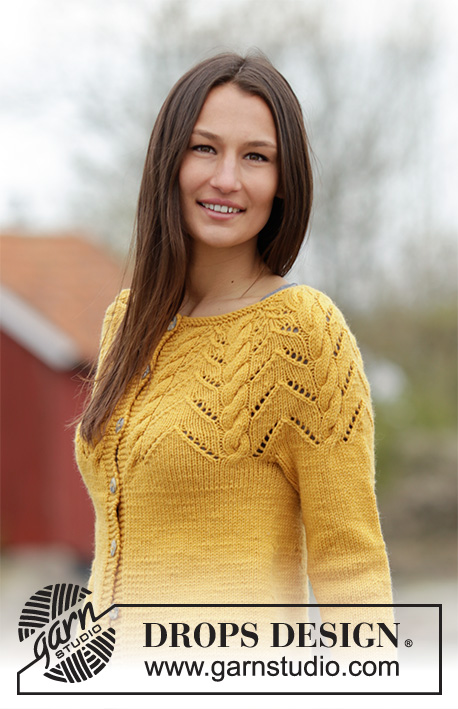

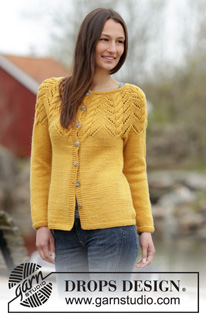
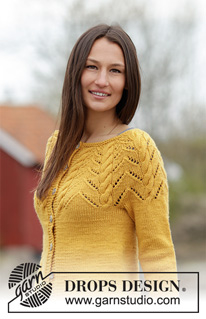



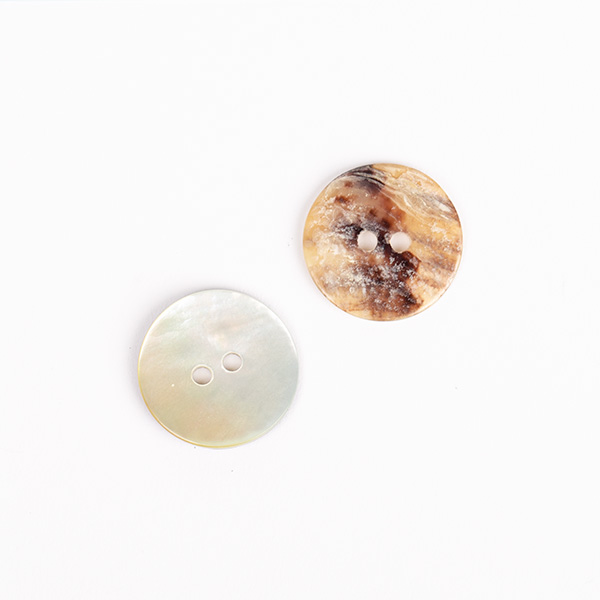

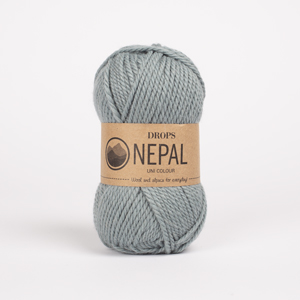
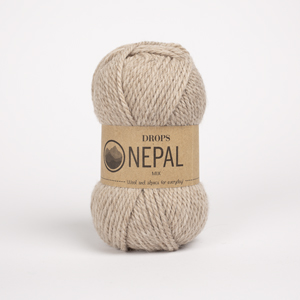
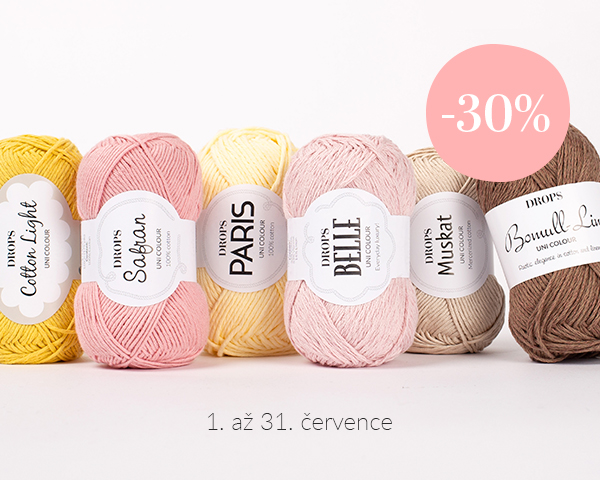



















































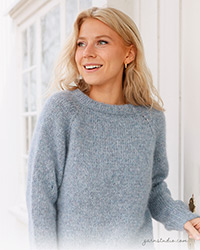
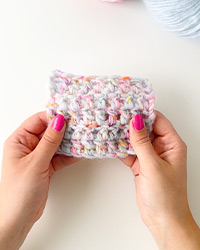
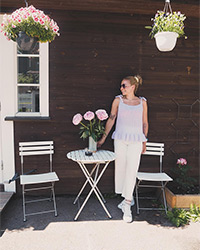
Přidejte komentář k návodu DROPS 166-8
Rádi bychom věděli, co si o tomto modelu myslíte!
Pokud se chcete na něco zeptat, dbejte prosím na to, abyste ve formuláři níže vybrali správnou kategorii - díky tomu se dříve dozvíte, co potřebujete vědět. Povinná pole jsou označena *.